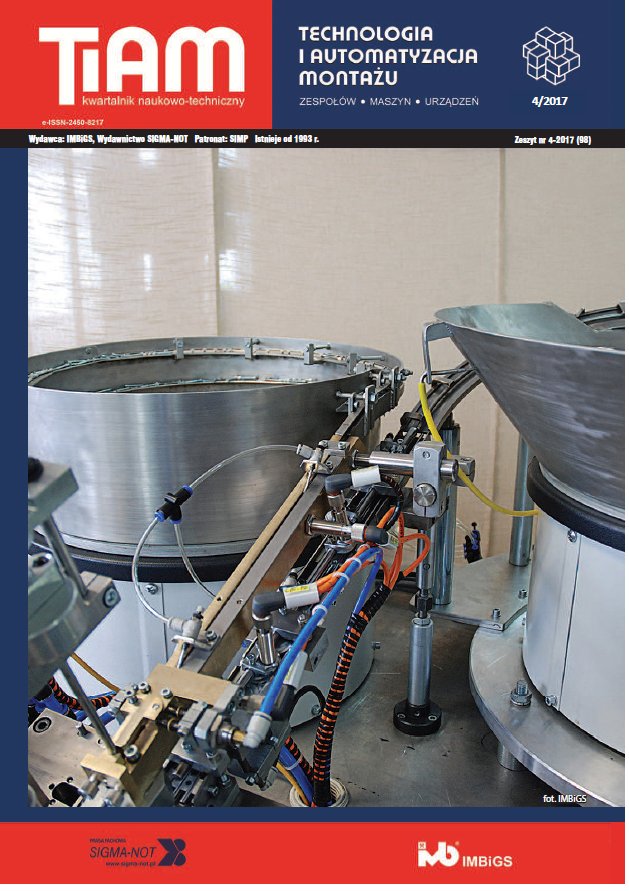Abstract
The paper presents an analysis of influence of machining accuracy of snap Þ t joint elements on assembly process, in particular on values of closing forces. One of the most effective and easy ways to bind elements is a snap Þ t joint which is used for the assembly of large-size structures. As a part of experimental study assembly process was developed and studied in aspect of machining accuracy of elements of mechanical joint. They are made of two materials i.e.: aluminum alloy EN AW-2024 (cover) and polymer composite (base). It has an epoxy resin matrix and is reinforced with glass fibres (TSE). Based on the conducted study, it has been noted that in aluminum cover are plastic deformations of snap elements, showing by increasing its diameter at the upper part. It can be result of internal stresses created in both blank manufacturing process (effect of technological history), and generated during machining. Additionally, du ring binding characteristic division into three phases has been observed: at first, clear increase of force necessary to achieve the required elastic deformation, then force stabilization and finally a sharp increase due to deformation of overall structure. Initial differences in the values of closing force are probably the result of differences in deviation values of performed holes in the base. The conducted analysis leads to the conclusion that the measured deviation values of dimensions Þ t in the established tolerances, which means that the mechanical snap Þ t joint was designed and manufactured properly.
This is an Open Access article distributed under the terms of the Creative Commons Attribution License CC BY 4.0 (https://creativecommons.org/licenses/by/4.0/)
References
Bonenberger P. R. 2000. “The first snap-fit handbook: creating attachments for plastic parts”. Munich: Hanser.
Genc S., R. W. Messler, G. A. Gabriele. 1998. “A systematic approach to integral snap-fit attachment design”. Research in Engineering Design (10): 84–93.
Klahn C., D. Singer, M. Meboldt. 2016. “Design Guidelines for Additive Manufactured Snap-Fit Joints”. Procedia CIRP (50): 264–269.
Kuczmaszewski J. 2011. „Efektywność wytwarzania elementów lotniczych ze stopów aluminium i magnezu”. Komputerowo Zintegrowane Zarządzanie, pod red. Knosala R., tom II, Oficyna Wydawnicza Polskiego Towarzystwa Zarządzania Produkcją, Opole: 7–18.
Messler R. W., S. Genc, G. A. Gabriele. 1997. “Integral attachment using snap-fit features: a key to assembly automation. part 1 – introduction to integral attachment using snap-fit features”. Assembly Automation (17): 143–155.
Osiński Z. (red.) 2010. „Podstawy konstrukcji maszyn”. Warszawa: PWN.
Zawora J. 2008. „ Podstawy technologii maszyn”. Warszawa: WSiP.

